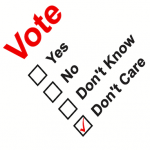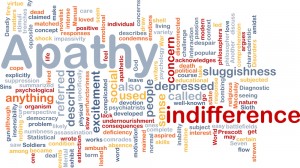
Some days even the most committed of Elves can be a little reluctant to return to work in the woodland. What must it be like though to feel like that every day? Apathy (diminished motivation, lack of emotion, interest or concern) is thought to be a frequent complication of stroke associated with poorer outcomes, but available clinical data lacks strength and published results have been contradictory.
Caeiro and colleagues completed a systematic review and meta-analysis of all studies evaluating apathy secondary to stroke to better estimate its rate and risk factors and explore associations with poorer outcomes. The results of which were published in Cerebrovascular Diseases in February 2013.
Methods
Following an extensive literature search of 1,399 publications, 19 studies were included that evaluated apathy secondary to stroke, enrolling a total of 2,221 patients. Ten of these studies evaluated more than 100 patients.
The primary outcome they looked for was apathy rate and they then looked at subgroups to explore differences in outcome estimates:
- stroke phase (acute and post-acute with a cut-off time period of 15 days from stroke onset)
- stroke past history (first-ever and any-stroke)
- patient age (younger and older patients with a cut off age of 65yrs)
In terms of quality, of the 19 studies, 3 (16%) were rated ‘low’, 11 (58%) ‘moderate’ and 5 (26%) ‘high’ according to criteria derived from the Centre for Reviews and Dissemination (see online supplemental information). As all good systematic reviews do, they also checked whether they were comparing apples with apples by measuring heterogeneity (the higher the heterogeneity the more mixed the group, so the lower the better).
Results
- Apathy affects approximately 1 in every 3 stroke patients
- Apathy rate is lower in patients without previous cerebrovascular disease
- The rate of ‘pure’ apathy (without concomitant depression) is twice as frequent as the rate of ‘pure’ depression (without concomitant apathy)
- Apathetic patients are about 3 years older than nonapathetic patients without gender differences
- Rate of apathy was similar for left- and right-sided hemispheric stroke lesions and for ischemic and hemorrhagic stroke type
- Apathetic patients are more frequently and severely depressed and cognitively impaired in comparison to nonapathetic patients
- Older age, cognitive impairment and functional disability were found to be predictors of apathy after stroke
- Apathy secondary to stroke does not appear to have a negative impact on clinical global outcome, except for apathetic patients with first-ever stroke and for younger patients
In general, the results did not change significantly if the ‘low’ quality studies were excluded. The only results with high heterogeneity (and so potentially comparing apples and bananas) were related to stroke side and type and clinical global outcome, however when each subgroup was looked at separately the heterogeneity decreased.
Conclusion
Apathy secondary to stroke is a more frequent neuropsychiatric disturbance than depression. Apathetic patients are more frequently and severely depressed and cognitively impaired. A negative impact of apathy secondary to stroke on clinical global outcome cannot be ascribed.
Limitations
The analysis included only institution-based studies. Although the results are reported as being in close agreement with those from prospective community- dwelling population studies, they should be generalised with caution to the overall post-stroke population.

Furthermore, studies also used different scales to evaluate apathy, depression, cognitive impairment and clinical global outcome. None of the studies reported information about stroke severity, which may have had a negative impact on motivational status.
Future research is needed to properly address how apathy and depression are related and affect cognitive functioning, specifically executive functioning. The high rate of post-stroke apathy should also prompt the evaluation of therapeutic options for apathy treatment.
But for today, this little Elf doesn’t feel like doing anything…
Links
Caeiro, L, Ferro, JM & Costa, J. Apathy Secondary to Stroke: A Systematic Review and Meta-Analysis. Cerebrovascular Diseases, 2013; 35: 23-39.


@LiaisonLawson blogs about new systematic review that explores the links btwn #apathy, #stroke & #depression http://t.co/xqQ5JrHlui
@TheStrokeAssoc Pls RT Apathy affects approximately 1 in 3 stroke patients, says new systematic review http://t.co/xqQ5JrHlui
@Mental_Elf @TheStrokeAssoc Re alternative therapies: @GlendaleFamily’s Chris will be researching the effect live music has on mental health
Apathetic patients are more frequently & severely depressed & cognitively impaired, says new SR http://t.co/xqQ5JrHlui
@LeahFHardy @simoncox73 @AnnaKennedy1 actually it can save your life – see this on apathy and death: http://t.co/B6NCt57ZL4
Apathy secondary to stroke is more frequent than depression – http://t.co/uOKuBCowAA
Apathy secondary to stroke is more frequent than depression http://t.co/tLr5Ndew4I via @sharethis